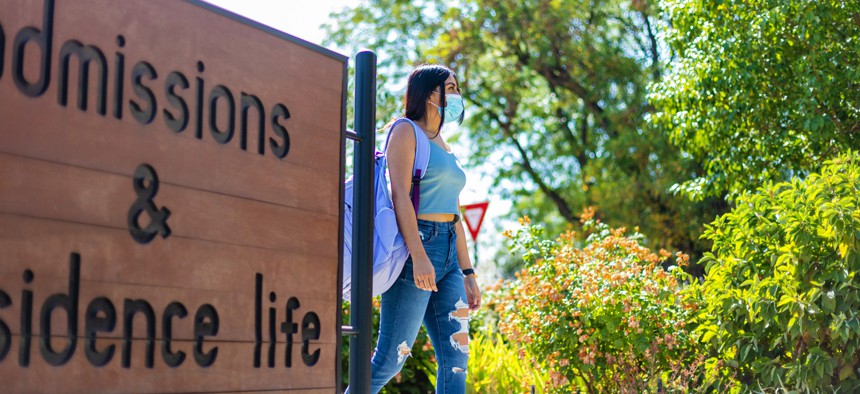A Plan to Offer In-State Tuition to Native Americans

istockphoto.com/eyecrave
The legislation, signed into law in Colorado, grants in-state tuition at public universities to students who are members of tribes with “historical ties” to the state.
College students who are members of American Indian tribes with “historical ties to Colorado” are eligible to receive in-state tuition at the state’s public universities under legislation recently signed into law by Gov. Jared Polis.
The bill, passed unanimously by the Senate in April and 49-11 by the House in May, requires public institutions of higher learning to “adopt policies to charge in-state tuition to any Native American student who is a registered member of a federally recognized American Indian tribe with historical ties to Colorado.”
Language in the law, which takes effect in the upcoming 2021-2022 academic year, acknowledges that “often due to circumstances beyond their control,” many members of indigenous tribes were “forced to relocate across state lines, far from their historical home places.”
“As a consequence,” it continues, “American Indian high-school students often only receive in-state tuition eligibility in their state of current residence rather than the state their tribes traditionally called their ancestral home.”
There are two federally recognized tribes in Colorado, but at least 48 others have historical ties to the state, according to the Colorado Commission of Indian Affairs. Between 2016 and 2020, an average of 200 nonresident college students self-identified as Native American, though it’s unclear how many of those students are members of tribes with ties to Colorado, according to the bill’s fiscal note.
The bill received support from faculty and administrators at some of the state’s universities, including Andrew Cowell, a professor of linguistics and faculty director of the Center for Native American and Indigenous Studies at the University of Colorado Boulder. Cowell told lawmakers in February that members of tribes with ties to Colorado often consider the state their homeland, regardless of where they reside.
“I work closely with the Arapaho people as a scholar, and whenever I am with them here in Colorado, they always talk about how good they feel to be here,” he said at a hearing of the Senate Education Committee. “They share their stories and knowledge of this place. ... The in-state tuition bill is one very important step in recognizing past injustices, and in restoring the rights of ‘home’ to these and other tribes.”
The overall fiscal impact of the legislation is unclear, as it’s likely to generate both revenue increases (by attracting students who may not otherwise come to Colorado) and decreases (by reducing the amount of tuition those students are required to pay). The decrease could total up to $3 million per year, according to the fiscal note, but the increase is impossible to quantify “since the decision to attend higher education cannot be predicted based only on cost.”
Similar State Laws
A handful of states have similar laws in place, though some (including Massachusetts and Montana) offer in-state tuition only to current state residents who are members of native tribes.
Just 19% of college-aged American Indian tribe members enrolled in college in 2016, compared to 41% of the general population—the lowest percentage among all race and ethnicity groups, according to federal census data. Proponents of Colorado’s measure, including state Sen. Stephen Fenberg, were hopeful that the legislation’s passage could boost those numbers while also acknowledging the state’s complicated history with its native tribes.
“This is an important step in appreciating the tribal nations historically tied to Colorado, as well as acknowledging Colorado’s painful history and the forced removal that has had a severely negative impact on Native nations,” Fenberg, a Democrat from Boulder and the senate majority leader, said in a statement.
Kate Elizabeth Queram is a senior reporter for Route Fifty and is based in Washington, D.C.
NEXT STORY: Rural Ambulance Services Are in Jeopardy as Volunteers Age and Expenses Mount





